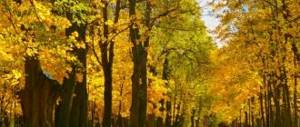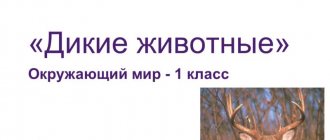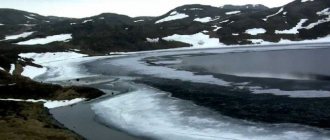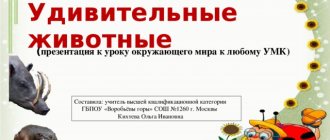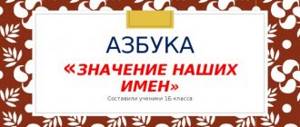Ice is a solid substance in a state of aggregation, which tends to have a gaseous or liquid form at room temperature. The properties of ice began to be studied hundreds of years ago. About two hundred years ago, scientists discovered that water is not a simple compound, but a complex chemical element consisting of oxygen and hydrogen. After discovery, the formula of water began to look like H2O.
Ice structure
H2O consists of two hydrogen atoms and one oxygen atom. In a quiet state, hydrogen is located on the tops of the oxygen atom. Oxygen and hydrogen ions should occupy the vertices of an isosceles triangle: oxygen is located at the vertex of a right angle. This structure of water is called a dipole.
Ice consists of 11.2% hydrogen, and the rest is oxygen. The properties of ice depend on its chemical structure. Sometimes it contains gaseous or mechanical formations - impurities.
Ice occurs in nature in the form of a few crystalline species that stably retain their structure at temperatures from zero and below, but at zero and above it begins to melt.
Project passport “What are ice and snow, what are they made of?”
Bibliographic description:
Antonova, E. A. Passport of the project “What are ice and snow, what are they made of?” / E. A. Antonova, S. A. Baibakova, T. A. Mitrofanova, A. L. Prokhorova. — Text: direct // Questions of preschool pedagogy. — 2020. — No. 4 (31). — pp. 24-26. — URL: https://moluch.ru/th/1/archive/160/5065/ (access date: 10.10.2020).
Type of project : educational and research, group.
Duration : short term
Participants : middle school children, teachers, parents (legal representatives).
Children's age : 4 years
Relevance:
Everyone knows that our country is the snowiest. The duration of winter is at least 4 months. Every year children look forward to the arrival of winter. They rejoice at the first snowflakes, the first ice. Snow and ice are familiar to us. But this is not only winter fun, it is a subject of research that contains a lot of interesting, curious and attractive things. The thirst to observe and experiment, to seek new information about the world are the most important features of children's behavior. Through experiments and experiments, children are given the opportunity to answer the questions “how?”, “why?”
Problem:
During the walk, the children looked at the snow and icicles for a long time and tried to taste them. When discussing among themselves, the guys came to the conclusion that icicles are frozen water. However, when looking at the snow, the children's opinions were divided. Some argued that it was also water, while others denied and found it difficult to answer what snow was made of and why it should not be eaten, because it is white, which means it is clean. The children turned to the teacher with this question. In this regard, the decision arose to implement an educational research project “What are ice and snow, what are they made of?”
Objective of the project:
creating conditions for studying the simplest properties of snow and ice, and experimenting with snow and ice.
Objectives by educational area:
Social and communicative development:
– cultivate emotional responsiveness and empathy;
– cultivate independence and focus;
– develop communication and interaction with peers;
– create conditions for the development of a positive attitude towards joint activities.
Cognitive development:
– stimulate cognitive motivation, develop curiosity;
– to develop the ability to observe changes during experience and draw simple conclusions.
Speech development:
– develop speech as a means of communication;
– enrich the active vocabulary; develop coherent, grammatically correct speech.
Physical development:
– develop gross and fine motor skills of the hands
– promote the development of children’s motor activity during outdoor games;
– improve children's health
– improve cultural and hygienic skills.
Artistic and aesthetic development:
– develop initiative and creativity in children;
– create conditions for the development of an aesthetic attitude towards the surrounding world.
Working with parents:
Consultation “Let's play with snow and learn its properties;
Consultation “How to conduct research with children”;
Questionnaire for parents
Project activity product:
Creation of the album “What are Ice and Snow?” based on experiments and comparative analysis of two substances.
Project implementation stages
| No. | The content of the work | Result |
| Stage 1 - preparatory | ||
| 1. | Analysis of conditions for project implementation | Increasing professional competence through the study of design technology. Determining the goal. |
| 2. | Determining the interest of children and parents to set the goal of the project | |
| 3. | Selection of methodological, popular science literature, illustrative material on the topic of the project | |
| 4. | Production of didactic games and manuals | Work on project activities has been implemented at this stage of preparation |
| 5. | Development of GCD notes on the planned topic | |
| 6. | Organization of a subject-development environment on the topic of the project | Conditions have been created for the implementation of the project at this stage |
| 7. | Design of parent corners in groups with placement of material on the topic of the project | Generate interest among parents in creating conditions for the implementation of the project |
| 8. | Selection of materials for children’s play and creative activities, preparation and registration of the group for the implementation of the project | Generate children's interest in project activities |
| 9. | Individual conversations with parents on the topic of the project | Educating parents on this topic |
| Stage 2 - practical | ||
| 1. | Conversations, NOD | “If you want to be healthy...”, “Caution - ice!”, “Caution - dangerous icicles!” Experiments with snow and ice, [3, p.150]; weather observation; snow, natural phenomena |
| 2. | Examination of paintings depicting winter landscapes, subject paintings, illustrations, photographic materials on the topic; compiling descriptive stories based on paintings; memorizing poems about winter and snow. | Formation of knowledge during the implementation of the project. Topic: “What are ice and snow”, watching the educational cartoon “Why are all snowflakes different?” |
| 3. | Outdoor, didactic, role-playing games | outdoor games “Frost - red nose”, “Snowflakes and the wind”, “Snowballs”; “Who’s next?”, “Hit the target”; game exercises “Snowflakes are spinning”, “Catch a snowflake”, breathing exercises “Blowing off snowflakes”, “Snowflakes are flying”; snowball games, |
| 4. | Finger games, physical education minutes | "Snow", "Winter" |
| 5. | Productive activity | drawing on the theme “Snowflakes”; plasticine modeling “Snowman” [2, p.150]; buildings made of snow “Snow Woman”, “Snow Fortress”. Creation of an album of experimental schemes |
| 6. | Reading fiction, memorizing a poem, guessing riddles on the topic of the project | Riddles on the topic, proverbs and sayings; works of folklore: “Like thin ice...”, Russian folk tales: “The Snow Maiden”, “Morozko”; poetry: A. Pushkin “Here is the wind, driving the clouds…”, “Winter Morning”; K. Balmont “Snowflake”; N. Nekrasov “Snowball”, I. Demyanov “First Snow”. prose: V. Bianchi “Forest in Winter”; L. Voronkova “It’s snowing”; N. Nadezhdina “What a snowdrift can tell you about” |
| 7. | Listening to music | A. Vivaldi “The Seasons” (winter) |
| Stage 3 - final | ||
| 1. | Creation of the album “What are Ice and Snow?” based on experiments and comparative analysis of two substances. | consolidation of knowledge acquired during the project implementation |
Literature:
- Veraksa N. E. Cognitive and research activities of preschool children. For working with children 4–7 years old / N. E. Veraksa. — M.: Mosaic-synthesis, 2012
- Modeling. Part 1. Allowance for children/Comp. I. V. Maslova. - M.: Balass, 2008–10 pp., ill.
- Around the planet step by step. Methodological recommendations for organizing educational activities for children 4–5 years old/S. V. Parshina, T. R. Kislova, A. A. Vakhrushev.-M,: Balass, 2020.-432 p.
- Savenkov A.I. Methodology for conducting educational research in kindergarten. S., Educational literature, 2004
- Savenkov A.I. Theory and practice of using research teaching methods in preschool education//Kindergarten. Management.2004, No. 2
Key terms
(automatically generated)
: snow, project implementation, ice, project activities, basis for conducting experiments, Snowflake, creating an album, creating conditions, comparative analysis, progress of project implementation.
Ice shapes
Ice is one of the most common substances in nature. On Earth there are the following varieties:
- river;
- lake;
- nautical;
- firn;
- glacier;
- ground.
There is ice that is directly formed by sublimation, i.e. from the vapor state. This appearance takes on a skeletal shape (we call them snowflakes) and aggregates of dendritic and skeletal growth (frost, hoarfrost).
One of the most common forms are stalactites, i.e. icicles. They grow all over the world: on the surface of the Earth, in caves. This type of ice is formed by the flow of water droplets when the temperature difference is about zero degrees in the autumn-spring period.
Formations in the form of ice strips that appear along the edges of reservoirs, at the boundary of water and air, as well as along the edge of puddles, are called ice banks.
Ice can form in porous soils in the form of fibrous veins.
Slide captions:
What is snow?
Snow is many, many beautiful snowflakes. They fall and fall from a height onto the ground, onto trees, onto the roofs of houses - clean, fragile, sparkling. Snowflakes, like rain, also fall from clouds, but they are formed completely differently than rain!
They used to think that snow was frozen droplets of water. The mystery of the birth of snowflakes was solved not so long ago. Snow will never be born from droplets of water. Droplets of water can become hailstones, lumps of opaque ice that sometimes fall with rain in the summer.
But water droplets never turn into beautiful hexagonal snowflake stars.
How are snowflakes formed?
Water vapor rises high above the ground, where extreme cold reigns. There, tiny ice crystals are immediately formed from water vapor. These are not yet the snowflakes that fall to the ground, they are still very small. But the hexagonal crystal grows and develops all the time and finally becomes an amazingly beautiful star.
All snowflakes are individual in shape, and it is impossible to find two identical snowflakes.
Snowflakes slowly and slowly fall, they gather in flakes and fall to the ground. It's snowing, it's snowing, It's like it's not flakes that are falling, But in a patched solop The firmament is coming down to the ground
You guys can easily make a snowman out of snow.
But sculptors can sculpt simply fantastic things from snow. Try it, maybe it will work for you too.
The world around us is incredibly amazing. Let's find magic together in things that are familiar to us, let's learn to see beauty and feel it in our soul. Catch a snowflake in your palm and examine it. What great wizard could create such a perfect form? A small miracle is in your palm. Once - and he’s gone. Your palm is warm and the snowflake has melted... Look around: how beautiful!
Physical properties
The physical properties of ice include:
- Density. In physics, an inhomogeneous medium is represented by the limit of the ratio of the mass of the substance of the medium itself to the volume in which it is contained. The density of water, like other substances, is a function of temperature and pressure. Typically, calculations use a constant density of water equal to 1000 kg/m3. A more accurate density indicator is taken into account only when it is necessary to carry out very accurate calculations due to the importance of the resulting density difference result. When calculating the density of ice, it is taken into account what kind of water has become ice: as is known, the density of salt water is higher than distilled water.
- Water temperature. Typically, water crystallization occurs at a temperature of zero degrees. Freezing processes occur intermittently with the release of heat. The reverse process (melting) occurs when the same amount of heat is absorbed that was released, but without jumps, but gradually. In nature, there are conditions under which water is supercooled, but it does not freeze. Some rivers retain liquid water even at a temperature of -2 degrees.
- Heat capacity. This is the amount of heat that is absorbed when the body warms up by every degree. There is a specific heat capacity, which is characterized by the amount of heat required to heat a kilogram of distilled water by one degree.
- Compressibility. Another physical property of snow and ice is compressibility, which affects the decrease in volume under the influence of increased external pressure. The reciprocal quantity is called elasticity.
- Ice strength.
- Ice color. This property depends on the absorption of light and the scattering of rays, as well as the amount of impurities in the frozen water. River and lake ice without foreign impurities is visible in soft blue light. Sea ice can be completely different: blue, green, blue, white, brown, or have a steely tint. Sometimes you can see black ice. It acquires this color due to a large number of minerals and various organic impurities.
Lesson about the world around us “Properties of snow and ice”
Lesson from the world around us
Osmakova Lyudmila Aleksandrovna, primary school teacher at the Verbenskaya Secondary School, Nikolaevsky municipal district, Volgograd region.
Topic: PROPERTIES OF SNOW AND ICE (grade 1)
Goals: to introduce students to some of the physical properties of snow
and ice;
develop observation and imagination;
cultivate love for native nature.
EQUIPMENT: snow, thin ice and pieces; glasses
saucers; a set of colored paper, newspaper; cards for each student.
During the classes
1. Organizational moment. Greeting from the teacher.
Teacher
:
I smiled at you, and you will smile at each other, and think how good it is that we are all together today.
We are calm, kind and welcoming. Take a deep breath and exhale. Exhale yesterday's resentment and anger, anxiety. Forget about them. Breathe into yourself the freshness of a spring day, the warmth of the sun's rays. I wish you a good mood. I. Speech warm-up
Answer questions with “YES” and “NO”
Is ice water? Is dew water? If water comes out of a cloud, is it rain?
If water freezes, is it ice? If there is frost on the trees, is it water?
II . Introduction to the topic of the lesson.
Teacher. Guess the riddles.
Quietly falling snow-white fluffs (snowflakes)
On the Nevedimka River, ice grew from a small piece of ice.
What did the Snowman bring to our lesson?
(An ice flake and a snowflake.)
Tell me, what do you think we will talk about today?
- Read what he asks us for.
(Study the properties of snow and ice.)
Ice and Snezhnka ( two students playing their role) come out to the music.
Snowflake. In the sky it was born from a drop of water,
I am a carved star of wondrous beauty. I’ll fly from the sky with a sparkling lens, I’ll sit down and melt if I want.
Ice. And I was also a little clean. And when she froze, she seemed to freeze. I’m also sparkly, not big in height. I am a radiant piece of ice, I am your sister!
Snowflake. But no!
I am made of the sun, silver! You are muddy water!
Just a mess! Me too, twin.
Ice. Come to your senses! That's it!
After all, I am your sister!
Teacher. Let's make peace between them. And with the help of experiments we will try to prove the relationship between snow and ice.
P I. _ Learning new material.
1. Practical work.
Experiment
1. Snow and ice turn into water
(There are
2 glasses with warm water on the teacher’s table. One student comes to the table and by touch determines the temperature difference between the water in the glass, the snow and the ice.)
Teacher.
What happens to snow and ice if they fall into warm water? (They will melt.)
- Let's check your assumption.
(The teacher puts a piece of snow and ice in the glasses and, holding it in his hands, shows it to the children. The snow and ice melt quickly.)
Mechanical properties of ice
The mechanical properties of ice and water are determined by their resistance to the influence of the external environment relative to a unit area. Mechanical properties depend on structure, salinity, temperature and porosity.
Ice is an elastic, viscous, plastic formation, but there are conditions under which it becomes hard and very brittle.
Sea ice and freshwater ice are different: the former is much more flexible and less durable.
When passing ships, the mechanical properties of ice must be taken into account. This is also important when using ice roads, crossings and more.
Water, snow and ice have similar properties that determine the characteristics of the substance. But at the same time, these readings are influenced by many other factors: ambient temperature, impurities in the solid, as well as the initial composition of the liquid. Ice is one of the most interesting substances on Earth.
Pushkin did it!
1. Practical work “Performing experiments with snow and ice.”
1) Using a textbook, formulate the purpose of the experiments.
The purpose of the experiments is to study the properties of snow and ice. Find out how snow and ice differ and how they are similar.
2) Consider and name the pieces of equipment.
Experiment 1. Stick and hammer.
Experiment 2. Colored paper
Experiment 3. Sheet of paper
Experiment 4. Two glasses.
3) Describe each experiment performed according to plan: a) what they did; b) what was observed; c) what conclusion was formulated.
Experiment 1. Take a lump of snow. We made a depression with a stick. The ice was not pierced by the stick. They took the hammer. They hit a piece of ice. The ice cracked and crumbled.
Conclusion: the snow is loose and the ice is fragile.
Experiment 2. A lump of snow and a piece of ice were placed on a sheet of colored paper. Compare by color.
Conclusion: snow is white and ice is colorless
Experiment 3. A lump of snow and a piece of ice were placed on a sheet of colored paper. We tried to see the paper through the snow and ice. We saw colored paper through the ice, but not through the snow.
Conclusion: snow is opaque, but ice is transparent
Experiment 4. We took two glasses. They put ice in one glass and snow in another glass. We waited for a while. The snow and ice have melted. There was water in the glasses.
Conclusion: snow and ice melt in warm weather. Water is formed.
4) Summarize the conclusions about the properties of snow and ice.
Snow and ice differ in their properties. The snow is white, opaque and loose. Ice is colorless, transparent and fragile. But snow and ice are also similar in that they melt in heat and form water.
5) Evaluate the results of the work (whether the goal of the experiments was achieved).
The goal of the experiments was achieved, we studied the properties of snow and ice and found out how they are similar and how they differ.
6) Tell other guys about the results of your work. Listen and appreciate their messages.
2. Which column describes the properties of snow, and which column describes the properties of ice? Indicate with arrows.
The left column describes the properties of ice. Ice is colorless, transparent and fragile.
The right column describes the properties of snow. The snow is white, opaque and loose.
3. Draw snowflakes. Compare them. What do all snowflakes have in common? How are they different?
All snowflakes have six corners, but the shape of all snowflakes is different.
4. Look at the photographs. Guess what the fortress is made of. What are fish made of?
Since the fortress is white and opaque, it is easy to guess that it is built from snow, since snow is also white and opaque.
Since the fish are colorless and transparent, it is easy to guess that they are made of ice, since ice is also colorless and transparent.
Take pictures of snow and ice in nature, on the streets of the city (village). Place your photos here. With their help, tell us how snow and ice help us relax, improve our health, and enjoy winter.
I think you can easily take such photos in any city.
Photo of a snowman, snow fortress, ice slide. We happily make snowmen, play snowballs, and go down the slide. This helps us relax and enjoy winter.
Photos of ski tracks, skating rink. In winter we go skiing and skating. This helps us improve our health.
Next How do plants live? Page 48-49
Back to Contents
